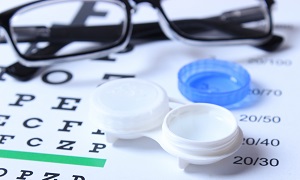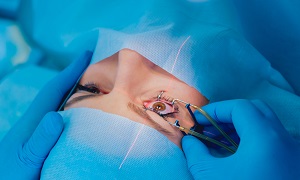Astigmatism
Astigmatism is a common imperfection in your eye curvature that results in blurred distance & near vision, which is generally treatable. When the cornea of your eye or the lens inside your eye possesses mismatched curves, astigmatism occurs. The cornea is the front surface of your eye. The surface becomes egg-shaped instead of having a round ball shape. Because of this, you get a blurred vision at every distance. Often present by birth, the condition occurs in combination with farsightedness or nearsightedness. It doesn’t require corrective action if it isn’t much pronounced. You may opt for lenses or surgery if pronounced.
Causes of Astigmatism
There are two structures with curved surfaces in your eyes. They refract or bend the light onto the retina which causes the images to form. These two surfaces are the cornea and the lens. The cornea is the clear front surface of the eye and the lens is a clear structure inside your eye changing its shape to help you focus on the nearby objects. Each of these elements possesses a round curvature in an eye with a perfect shape. A lens and a cornea with such curvature refract the incoming light that forms a sharply focused image on the retina present at the back of the eye.
Refractive error: If your lens or cornea is egg-shaped and having two mismatched curves, the light rays don’t bend in the same manner resulting in two different types of images. The overlapping or combining of these images result in blurred vision. Astigmatism a kind of refractive error. When your lens or cornea curves more steeply in a direction than the other, astigmatism occurs. If the cornea has mismatched curves, you will have corneal astigmatism while if your lens has mismatched curves, you will have lenticular astigmatism.
Blurred vision can be a result of either of the two astigmatisms.
Blurred vision may be more in one direction, either vertically, horizontally, or diagonally. Astigmatism may also develop following a disease, eye injury, or surgery.
Other errors: Astigmatism may also occur with-
- Hyperopia (Farsightedness) occurs when your cornea curves too little or the eye is smaller than the usual. The light never comes to a focus on the back of the eye, when your eye is in a relaxed state. This makes the nearby objects appear blurry.
- Myopia (Nearsightedness) occurs when your eye curves too much or it is longer than the usual. The light focuses in front of your retina, instead of focusing on your retina. This, too, makes the objects appear blurry.
Symptoms of Astigmatism
The symptoms of astigmatism may be:
- Headaches
- Blurred /distorted vision
- Squinting
- Eyestrain / discomfort
- Difficulty with night vision
Diagnosis of Astigmatism
An eye examination is done to diagnose astigmatism. There are a few tests for inspecting the health of your eyes and the refraction that determines the way your eyes will bend light. Your doctor will use different instruments for the examination. He or she may aim bright light at your eyes while asking you to look through various lenses. These tests help the doctor to examine various aspects of your vision & eyes. They help to determine the required prescription for providing clear vision with contact lenses or eyeglasses.
Treatment options for Astigmatism
Corrective lenses
The doctor will treat the condition by asking you to wear corrective lenses that counteract uneven curvatures of your lens and cornea.
- Eyeglasses- These are made of lenses that help to compensate for the uneven shape of your eyes. The light bends into your eyes properly because of these lenses. They also help in correcting refractive errors like farsightedness or nearsightedness.
- Contact lenses- These can also correct astigmatism. They are available in a variety of styles and types like disposable soft; rigid, gas permeable; extended wear and bifocal. There is an increased risk of infection in the eye if you wear contact lenses for a longer period of time.
Refractive surgery
It improves vision, thereby reducing the need for contact lenses or eyeglasses. Your doctor will use a laser beam to reshape the corneal curves. This helps in correcting the refractive error. Your doctor will evaluate and determine if you can undergo surgery.





